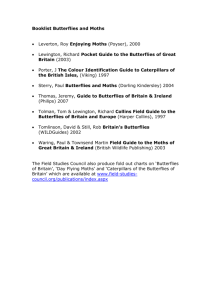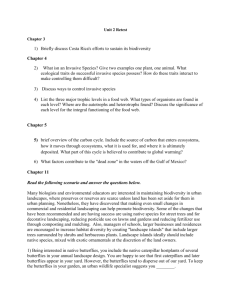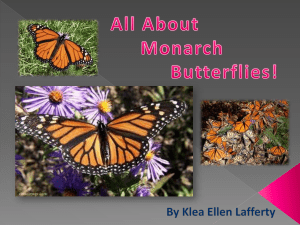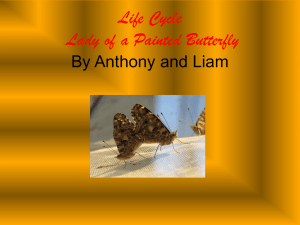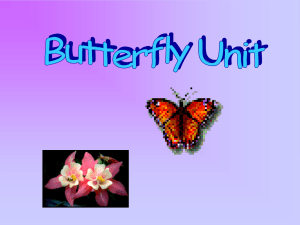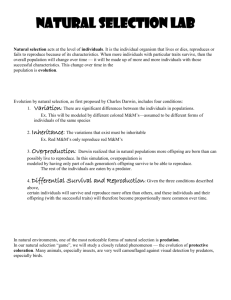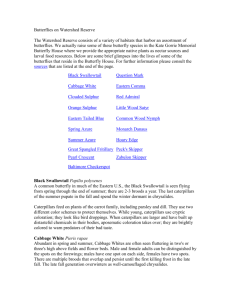This will allow butterflies to breed in your garden.
advertisement
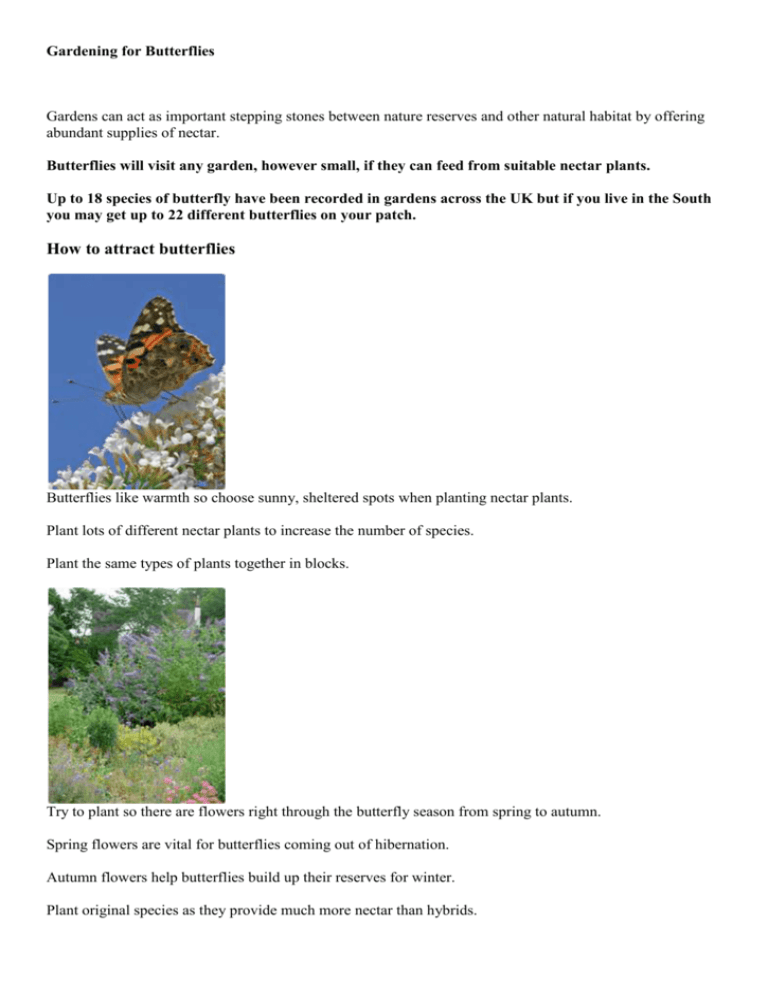
Gardening for Butterflies Gardens can act as important stepping stones between nature reserves and other natural habitat by offering abundant supplies of nectar. Butterflies will visit any garden, however small, if they can feed from suitable nectar plants. Up to 18 species of butterfly have been recorded in gardens across the UK but if you live in the South you may get up to 22 different butterflies on your patch. How to attract butterflies Butterflies like warmth so choose sunny, sheltered spots when planting nectar plants. Plant lots of different nectar plants to increase the number of species. Plant the same types of plants together in blocks. Try to plant so there are flowers right through the butterfly season from spring to autumn. Spring flowers are vital for butterflies coming out of hibernation. Autumn flowers help butterflies build up their reserves for winter. Plant original species as they provide much more nectar than hybrids. Prolong flowering by deadheading flowers, mulching with organic compost, and watering well to keep the plants healthy. Plants that are well-watered will produce far more nectar for hungry butterflies. For Spring nectar plant: For late Summer/Autumn nectar plant: Aubretia Buddleia Ice Plant (Sedum spectabile) Bluebells Candytuft Ivy Cuckooflower Chives Lavender Dandelion Chrysthanemum Lilac Garlic Mustard Common bird's-foot trefoil Marjoram (Origanum) Honesty Cornflower Michaelmas Daisy Pansy Escallonia Mint Primrose Forget-me-not Phlox Sweet Rocket French Marigold Purple Loosestrife Sweet William Globe Thistle Red Valerian Wallflower Hebe Scabious Willow Honeysuckle Thistles Violas Hyssop Thyme Caterpillar food-plants You can encourage some species to stay and breed by planting the right foodplants and shelter for the caterpillars. Plant: Food for caterpillars of: Holly and ivy Holly Blue Purging Buckthorn and Alder Buckthorn Brimstone Stinging Nettles (in a sunny spot) Comma, Red Admiral and many moths Cuckooflower (Lady's Smock), Sweet Rocket and Garlic Mustard Orange-tip and Green-veined White Common bird's-foot trefoil Common Blue Thistles Painted Lady Go wild Let a patch of wildflowers and grasses grow. This will allow butterflies to breed in your garden. Caterpillars of Speckled Wood, Meadow Brown, Small Heath and Ringlet all eat common native grasses where they are left to grow tall. To create a wild area, allow grasses and wildflowers already there to grow. To supplement with extra plants, treat wildflower seeds like any others. Sow in trays, prick out and grow on before planting out in small groups. In the first year cut the area several times to give wildflowers a chance against competitive grasses. In subsequent years, grass can be cut at the end of each summer, after all the flowers have set seed. Remove the 'hay' afterwards and to leave a few patches of long grass where caterpillars can pass the winter. In short grass, plant Common Bird's-foot Trefoil to attract the Common Blue butterfly, or plant stands of nettles for Small Tortoiseshells and Peacocks. Consider planting nettles in sunny spots in buried containers, which stop them getting out of control. Go native Native wildflowers are some of the best nectar plants you can grow for butterflies. Native plants and trees are important to both butterflies and moths - particularly as food for caterpillars. A mixture of flowering shrubs, plants, wildflowers and herbs will provide an attractive mix. Go organic Don't use insecticides and pesticides. They kill butterflies and many pollinating insects as well as ladybirds, ground beetles and spiders. Most common garden butterflies will lay their eggs on nettles, honesty or sweet rocket and do not cause noticeable damage. If caterpillars from Large and Small Whites are a problem on cabbages, plant nasturtiums as an alternative foodplant. You can also cover cabbages with fleece in the spring . Try to avoid spraying with chemicals - it is best if you just pick the caterpillars off. Don't buy peat compost. Peat bogs are home to many special animals and plants, including the Large Heath butterfly, which is declining across Europe. This scarce habitat is being destroyed to provide peat for garden compost. There are now good alternatives available from garden centres. Don't forget the moths! Many moths are as colourful and attractive as any butterfly and there are so many more species to see. They are a vital part of the foodchain and food for many of our garden birds. Moths love Tobacco plants and night-scented flowers like Evening Primrose, Night-Scented Stock, Jasmine and Honeysuckle. Most moth caterpillars feed on wild flowers, trees and shrubs, so growing native plants will attract moths to your garden. Take a break in the winter months You can help butterflies and moths during the winter months, by not tidying up too much. This means the caterpillars and pupae are not disturbed. Some butterflies overwinter as adults. They do this in dense vegetation, ivy or dry places like log piles. Peacocks and Small Tortoiseshells often hibernate in sheds and outbuildings. If you find them hibernating in the house, put them outside. The warmth of the house makes them active and drains their energy reserves. Wait until a warm day and put them outside to find a better place to hibernate. Early spring is the best time to tidy up perennial plants and also to cut buddleias back hard to encourage late autumn flowering.

